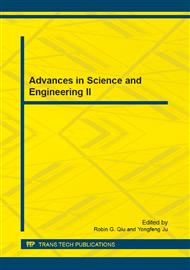[1]
Ide,N., Veronis,J. Introduction to the special issue on word sense disambiguation: the state of the art. Computational Linguistics, 1998, 24(1): 1-40.
Google Scholar
[2]
Li, Juan-zi.The research on Chinese word sense disambiguation[Ph.D.Thesis].Beijing:Tsinghua University, 1999(in Chinese).
Google Scholar
[3]
Black,E. An experiment in computational discrimination of English word senses. IBM Journal of Research and Development. 1988, 32(2): 185-194.
DOI: 10.1147/rd.322.0185
Google Scholar
[4]
Mooney, R.J. Comparative experiments on disambiguating word senses:an illustration of the role of bias in machine learning. In:Brill, E.,Church,K., eds.Proceedings of the Conference on Empirical Methods in Natural Language Processing. Somerset, NJ: Association for Computational Linguistics, 1996. 82-91.
Google Scholar
[5]
Dagan,I., Itai,A., Markovitch,S. Two languages are more informative than one. In: Brown,P., Kameyama,M ., eds.Proceedings of the 29th Annual Meeting of Association for Computational Linguistics. Berkeley, CA : Association for Computational Linguistics,1991. 130-137.
DOI: 10.3115/981344.981361
Google Scholar
[6]
Yarowsky.D. Word sense disambiguation using statistical models of Roget's categories trained on large corpora. In: Zampolli,A., ed. Computation Linguistic'92. Nantas: Association for Computational Linguistics, 1992. 454460. http: /www. cs. jhu. edu/-yarowsky/pubs. htm1.
DOI: 10.3115/992133.992140
Google Scholar
[7]
Tianxuan, DU Xiao-Yong and LI Hai-Hua. Computing Term-Concept Association in Semantic-Based Query Expansion. Journal, Journal of Software. 2OO8. 19(8): 2043-(2053).
DOI: 10.3724/sp.j.1001.2008.02054
Google Scholar
[8]
DONG Zheng-Dong, DongQiang. HowNet[EB/OL]. http: /www. keenage. odin.
Google Scholar
[9]
XU Nan-Xuan, ZHOU Heng-Ming. Constructing Semantic Library to Reflect Word InterreIatiOnshi, Journal, journal of shanghai jiaotong university. 2008. 07:1129-1132.
Google Scholar
[10]
YANG Hong-Er, ZHANG Guo-Qing and ZHANG Yong-Kui. a Chinese Word Sense Disambiguation Method Based on Primitive Co-occurrence Data. Journal, journal of computer research and development. 2001. 38(7): 833-838.
Google Scholar


